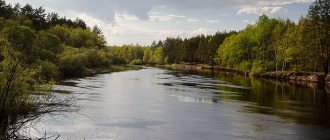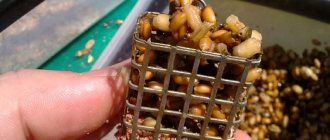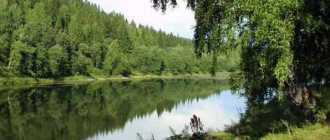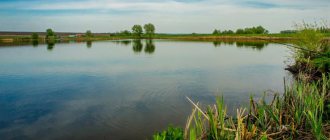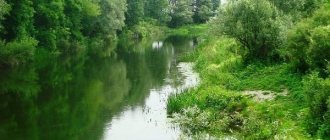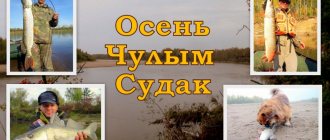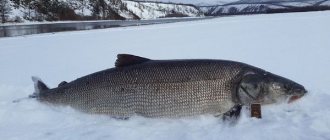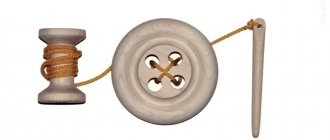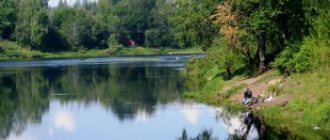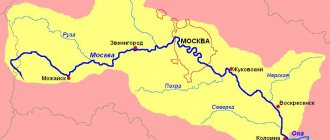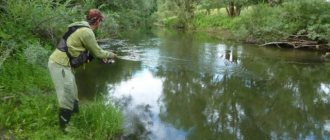general description
The Sal River is 776 km long. Its basin is 21,300 square kilometers. The maximum width reaches 118 m (at the mouth). The average value is 40 m. The depth is up to 4 m, but there are also holes of 6 meters. Starting at the “borderland” in Kalmykia, the water flow flows through several districts of the Rostov region. The general direction is northwest. Weak power comes from the Don Main Canal. Water consumption is only 15 cubic meters per second. There are only 9 branches in the system (including streams). The largest are Kara-Sal, Bolshoy Gashun and Kuberle. The nature of the river is extremely arid. In summer and autumn there are riffles.
The Sal River was formed in the depths of the southern end of the Ergeninskaya Upland. At the same time as herself. Moreover, the river bed is laid among terraced deposits and rises somewhat above the valley itself (which is why it often dries up and changes direction). As a result, rivers with the root “sal” are marked on the map among different peoples. And with more ancient names, but corresponding in geography to this river. The first description of the Sal River, similar to its modern version, was made by the Arab traveler Al-Idrisi. He indicated the location of the Salav water stream on the territory of the Khazar Kaganate. Moreover, in a place where it was accessible to the “Russians”. Since ancient times, the Sal River has been located in the intersection zone of various nomadic peoples - Paleolithic, Indo-Iranian and Turkic. If the steppes of South-Eastern Europe are considered the “gateway of nations,” then the Sal waterway is more appropriately called “their very gates.” That is why the very first Silk Road subsequently passed here, connecting the developed countries of the East with the Crimean ports of Byzantium.
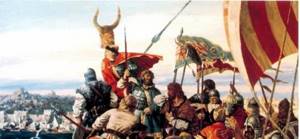
There may have even been transport use of the Sal River at one time. At the very least, the Semikarakorsk settlement excavated in the river arm hints at the existence of a busy pier (although it could have stood on the Don). Apparently, this was once the famous headquarters of the Khazar Khagans, built even before the appearance of Sarkel. He himself is now submerged under the water of the Tsimlyansk Reservoir. Soon the power of the Russian and Khazar White Vezha ceases to exist. It is controlled exclusively by the Cumans, who have become part of the Ulus of Jochi. Caravans continued to move to the mouth of the Sal River during the Horde era. Tamerlane stopped all activity, trying to exalt his own homeland (the ancient cities of modern Uzbekistan) in terms of trade. Since the 16th century, the bed of the Sal has been divided by the Nogai and Astrakhan Tatars, and centuries later the Oirats (Kalmyks) find themselves in its upper reaches. It was they, as mentioned, who gave the final name to the river. By the way, Oirat legends claim that it was impossible to ford Jurak-Sal even in summer. In the next century, the Don people and fugitive archers appeared. And another 100 years later - the lost ships of Peter’s Azov flotilla (which means that in the 18th century the reservoir was still navigable). In the same century, small farms and settlements were formed, founded by newcomers from different places. Including the last people of the Nogai Horde, who surrendered to the mercy of Russia at the turn of the 16th-17th centuries.
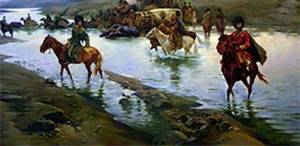
In the century before last, the colonization of these places by the Don Cossacks gained special momentum. In 1915, the water flow flowed into the Don in a different place - near the village of Razdorskaya. The large number of poor peasant farms allowed the Bolsheviks to establish many collective farms (now half of them have disappeared). After the war, the government actively switched to a policy of land reclamation. They finally started feeding Sal.
Ponds and lakes
Fishermen like to combine business with pleasure. That is why they combine fishing with relaxation and a good time. Here are a few places in the Rostov region where you can combine business with pleasure.
Blue Lakes Base
You can get there along the road from Rostov to Bataysk by turning near the traffic police post and moving along the country road towards Bataysk parallel to the main road. Among the predators you can count on pike and pike perch.
The lake is also home to carp, which becomes a frequent visitor to fishing cages. They catch it with bottom gear, with a float, and with a spinning rod. A good place for fishing and relaxation.
Kuleshovsky Ponds
From Rostov towards Azov you need to go to the bazaar near Kuleshovskaya station. There you need to turn right and this road will lead to this pond. The reservoir is regularly stocked with fish; in its waters you can find carp, grass carp, silver carp and pike.
They are caught using all kinds of gear, such as feeder, spinning and float gear. When catching silver carp from the surface of the water using special float gear, you must count on the fact that small carp, of which there are a lot in the pond, will not give you a quiet life. Carp are actively caught using boilies, so this reservoir can rightfully be called a boilie reservoir.
Sandy estuary
This base is located on the Manych River. They catch grass carp, carp, bream and silver carp in this location. Among the predators represented here are pike, perch, and pike perch. The predator is actively caught using spinning rods and live bait. They can fish both from the shore and from a boat.
However, fishing from the shore is ineffective and you will need a boat to fish all promising places.
Novo-Nikolaevka
To get to this location you need to drive along the highway towards Krasnodar to the village of Samarsky. There, the first turn to the left should lead to Novo-Nikolaevka. Rudd, carp, tench, and crucian carp are caught in this reservoir. You really can’t count on a trophy, but you can leave with a good catch. They catch both with a float and with feeder gear.
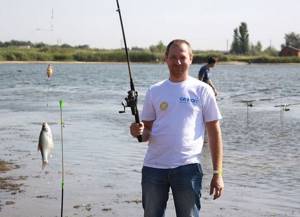
Merry Manych
On the highway towards Volgodonsk you need to drive all the way to the Vesely village. There, follow the sign and turn towards the village of Soleny. This base is located near the Veselovsky reservoir.
Among the frequent guests of fishing cages are bream, carp, pike, pike perch, crucian carp, and ram.
They catch both with a spinning rod and a feeder, both from the shore and from a boat.
Darvsky Pond
The pond located near the village of Daryevka will be of interest to fishermen hunting for peaceful fish. The pond is located 70 kilometers from Rostov, which makes it accessible to city residents. Silver carp, mirror carp, carp, grass carp and crucian carp are caught here. They fish both from a boat and from the shore.
They prefer to fish with a feeder or from a boat, since it is necessary to throw or swim closer to promising places.
You can ask your question to our author:
Source and mouth of the Sal River
The source of the Sal River is located in the Dzhurak gully (Tselinnaya region of Kalmykia). It lies at 171 m above sea level. We are talking about one of the khamurs of the Ergenin Upland. The point is surrounded by a slightly hilly semi-desert. There is low grass near the water. The source of the Sal River is a watercourse 40 centimeters wide. Kalmyks call it “Jurak Sal”. Translation: “raft in a beam.” Hydronym was born because of the islands downstream. They were formed by an accumulation of reeds. Once upon a time, the Oirats crossed the old (still full-flowing) Sal. Nearby is the village of Dzhurak.

The mouth of the Sal River enters the Don channel in the Semikarakorsky district of the Rostov region. Conversation about the territory of the fruit nursery microdistrict of the city of Semikarakorsk. The width of the channel at its confluence is 118 meters. The northern side is covered with a small area of floodplain forest. South too. But in a narrower strip and with dachas. The last kilometer of the path and the entrance to the Don basin are densely overgrown with reeds and cattails.
Sal River Basin
Before the confluence of the Kara-Sal, the Sal River moves with difficulty, and there are small patches of salt marshes. In summer, the upper reaches dry out completely. Behind the Volny-Valuevka road there is a serpentine widening of up to 75 meters. Its length is 5 kilometers. The same thing happens when a body of water absorbs Zagista. At Frunze, the vector becomes much further west. There are no bushes or trees until the intersection with the Salovsky-Red October road. Further on the left side, the flow of the Sal River is decorated with an insignificant “oasis” of low-growing acacia. From this section of the Zimovnikovsky district of the Rostov region, the river becomes even more muddy, since its sides are composed of loess-like loams, the material of which it carries with itself. The fact is that here (in the middle reaches, behind the Kuberle arm and the “oasis”) its speed increases. The course continues to be winding. In front of the Semenkin farm, the right edge becomes high and bushes appear. This is an outcrop of chalk rock. Further, the flow of the Sal River passes through Bolshaya Martynovka (this is the Martynovsky district). The river passes the further part of the 61st region a little to the south, skirting the chalk cliffs along the right terrace. From here, the Sal River basin absorbs the last significant tributaries and receives recharge in the form of several ditches drawn from the Don Main Canal. Closer to the “finish”, the Sal River basin reaches a more even terrain. From all sides it begins to be surrounded by other hydraulic structures and oxbow lakes of dry rivers. In the neighborhood there are also spacious storage ponds. The Semikarakorsky district covers the waterway with richer grass and different types of reeds. Elm and black elm are already everywhere.
Tackle for catching bream
Some anglers even fish with an ordinary stick with a float, using a piece of lard as bait. But, given the fact that the average bream weighs 1-5 kg, you need to have strong and reliable equipment. Bottom and half-bottom gear have proven themselves much better in hunting bream using lard.
The positive aspects of using equipment are low cost and high efficiency. Equipment is assembled even from scrap materials. You will need:
- reliable and rigid rod;
- any reel model;
- high-quality main line;
- leashes 10 cm with sharp hooks;
- springs for bait with their own shipping (total weight 30-40 g).
The size of the rod does not matter; it is important that the “stick” is elastic and handles the jerks of the bream well. When equipping a donkey, you can get by with a simple reel, since you don’t need to make frequent casts to catch fish. The springs are filled with bait, with the help of which they attract prey, and pieces of lard are attached to the hooks. The bite is determined by the movement of the rod, the main thing is to wait for the moment when a resident of the underwater world approaches.

Half-bottom rigging
With this tackle, bream are effectively fished on spring days, as soon as the ice melts and the flood comes. The fast current becomes an obstacle to using a float rod, and the donka is ineffective due to the fact that the fish comes closer to the shore.
To make the tackle, you will need a main core with a thickness of 0.3 mm, and the diameter of the fishing line on the leashes should not exceed 0.17 mm. Hooks are selected taking into account the size of the future prey and make sure that the sting is sharp. The weight of the sinker is selected in accordance with the test of the rod (on it it is marked on the butt, on others it is determined experimentally). The moment of bite is manifested by movements of the rod tip.
Sights of the Sal River
Village Dubovskoye

In the district of the same name in the Rostov region, the flow of the Sal River, passing along a bed with a 2-step terrace, touches the first large settlement on its way. Dubovskoye stretches for 5.5 kilometers. It has a beautiful Vladimir Church and a forest park on the north-eastern outskirts (poplars, elms, ash and acacias). And once upon a time, judging by the toponym, there were oak trees. But this is a wrong assumption. It’s just that the village was founded by Captain Dubovskov. In 1786. The peasants were constantly in poverty and eagerly awaited the arrival of the Bolsheviks. In general, you have a place to stock up on water, food and new experiences, taking a short break from the desert area. By the way, about this very area. It turns out (according to Nogai legends) no one lived here before the Nogais. And considering that they simply migrated through this point, no one lived here before the residents of the described village. Several archaeological excavations near the never-discovered Tsar's Mound did not yield any finds. Such a bad place. The caravans passed further south, because medieval Sal itself was 135 kilometers further south. The city of Salsk still stands there (on Yegorlyk). The channels coincided in the upper and lower reaches. They were earlier even more full-flowing. The current Sal, most likely, was a drying up northern tributary of the first. And no one has ever “settled” on it.
Ilyichevskoe (Illovaiskoe) tract
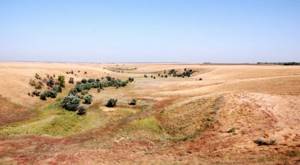
After passing under the highest (chalk) ravines in the area of the Semenkina farm, the Sal River leads travelers to the trail to the Ilyichev farm, which has an even sadder story. People appeared here only at the beginning of the 19th century. Already Russian Cossacks. A ravine covered with small vegetation stretches from the village to Sal (before that, all the ravines were bald). It is for this reason that the place turned into a nature reserve. You can find shadow.
Stoyanovskoe tract
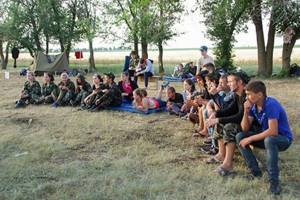
In Verkholomovo, rafting along the Sal River is also interrupted to set up camp. Sparse vegetation covered an area of 1,207 hectares. More than half is covered with forest. True, you will have to walk a little from the shore along the road to the south. “Zelenka” starts there. The reward is to see how wild boars, sika deer and even golden pheasants are bred. Elm, Crimean pine, English oak, green ash and maple are artificially planted here.
Bolshaya Martynovka
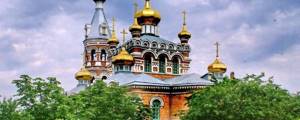
At the settlement named in the top line, parking lots on the Sal River also make sense. Opposite the Trinity Church (the only one erected in honor of the anointing of the “monster” Nicholas II), on the left hand there will be a narrow arboretum with a length of 1.8 kilometers. The road over the bridge leads to the main markets, the Red Partisans Park and all the shops available. The peculiarity of the village is that places that have been inhabited since ancient times begin from here. The settlement of 1772 (stretched along the river for 5.5 kilometers) appeared on the site of an ancient settlement that was mercilessly plundered. For this reason, its name was originally Gorodishchenskaya. There is an architectural monument Cossack Kuren. Where the riverbed makes its first bow, a village beach is built. It is still unclear what role the name Martyn plays here.
Bolshaya Orlovka

On this section of the path, a regular green border (1 tree wide) appears near the reservoir. Convenient parking on the Sal River is again available to you. You will find yourself at a settlement of the same size. But the park here is more modest, and there is no church at all. But there are plenty of retail shops - it’s possible to make different stocks. The name hints at Vasily Orlov. He was the first to be given possession of this land. It is curious that there once was a Khazar “aul” here too. And the village appeared in 1787, also becoming part of the 1st Don District of the All-Great Don Army. The population of some farms in southern Ukraine, including the villages of Crimea, was invited to live here. And the ancestors of 850 Meskhetian Turks came here in the late 80s - 90s of the last century. They came during a period of national conflicts from the southwest of Georgia. Its population was then actively getting rid of all Muslims. Many vineyards and gardens in the Oryol region were planted by the hands of Meskhetian Muslims. They are doing what they are used to.
Semikarakorsk
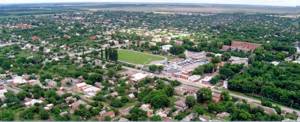
Rafting on the Sal River ends in a spacious regional center overlooking the Sal and Don embankments. And also into 2 eriks formed by them, conveniently dissected by dams. In general, the town is simply saturated with moisture. And therefore it is decorated from the north with 2 impressive forests, and from the south - dachas rich in fruits and vegetables. You already know about the excavations of the settlement of the same name. This is the main “highlight” of the 9-kilometer Semikarakorsk, which shelters farmers, land reclamation workers and livestock breeders of 87 nationalities. The second is the abundance of beach places (including equipped ones). Guest reviews recognize the third advantage as the monument to Border Guards of All Generations in the form of a bright green-red border pillar surrounded by flower beds. The Semikarakorsk Ceramics Museum is also surprising (the porcelain factory here is old). Children will be attracted by the Cossack Pristan entertainment complex on the banks of the Don. The town was organized by 7 Karakorsky brothers - Old Believers who fled central Russia at the end of the 16th century - during the period of “pacification of the Nogais”. In connection with the peasant wars, the settlement changed its location several times (the fugitives were hiding from the authorities). The last point was a nickel at the mouth of the Sal - between the very wide but safe oxbows of the Don. The current agglomeration “pleases” the eye with the ruins of a canning factory that once fed and clothed the population of the entire area. Fans of “abandoned buildings” (there are many of these among tourists) will really like the remains. Well, everyone else will go for a walk along the updated bridges spanning several bodies of water at once, and admire the park with a fountain and a temple.
Tourism and recreation on the Sal River
The Sal River is located in the sharply continental (arid) half of the temperate zone. It is unlikely that mushroom pickers or fans of forest hikes will be interested in its valley. No recreation center awaits lovers of fishing and picnic-swimming (except for those located in Semikarakorsk). Extreme is not associated with any air sports or mountain tests (there are no airfields or hills either). Fishermen tend to come here more. It remains to add that the water flow intersects or runs parallel to several roads.
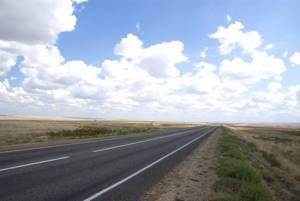
Among them are Elista-Volgodonsk, Remontnoye-Dubovskoye, Volgodonsk-Zimovniki, Volgograd-Salsk, Progress-Krasnoarmeysky, Volgodonsk-Bolshaya Martynovka-Semikarakorsk and Rostov-on-Don - Semikarakorsk - Volgodonsk. Trains from Volgograd pass through the Remontnaya station (this is north of the village of Dubovskoye).
The Sal River will delight participants in rally raids, horseback riding, winter snowmobile racing and cyclists. The terrain has no obstacles except for the occasional beams. Sometimes they are quite deep and could hide a small town inside.
A beach holiday on the Sal River will delight you with sand on any fragment of the current except the Kalmyk one. Sometimes (usually in the center) the water's edge is quite narrow. A wall formed by loam approaches the water. In the lower reaches, swimming will be complicated by reeds.
Eventful recreation on the Sal River is associated exclusively with the village of Remontny (annual competitions-concerts “Play the Accordion!” and “Heritage”), the farms of the Konstantinovsky district (a folk art competition is held on Russia Day) and Semikarakorsk (an annual October festival of folk crafts with a concert) .
Rafting on the Sal River is the most common local activity (after fishing). You can even send children to it (other than them, the river rarely interests anyone). Such an adventure usually starts from the Slobodsky farm and ends in Semikarakorsk. Water clubs gather children's groups. The “savages” then continue along the Don section. All the way to Razdorskaya. In general, the lower reaches are the most popular alternative to a river trip.
Regional and seasonal features of fishing bream for lard
This fish is found in most lakes, rivers and ponds located in the middle zone. However, each region has its own characteristics of fishing and lard fishing. Those who like to sit with a fishing rod on the Moscow canal are convinced that bream bite on such bait exclusively in the summer, without attaching importance to its taste. It is important that it is fresh.
To learn more:
Fishing for a worm: where to dig and how to save
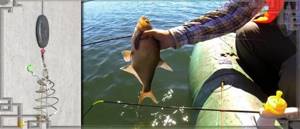
Those who throw gear into the water from the banks of the Oka go with lard to catch this fish. On the river, effective catches using this bait do not depend on the time of year, temperature, or time of day - the bite will always be there. And Ural fishermen are convinced that bream in the region bite on lard during the last two months of autumn. The Volga, Don and other bodies of water have their own characteristics, which depend on the place of fishing and the time of year. It has been proven by practice that in areas with standing water this fish bites on lard much more actively than in the current. But sometimes there are exceptions.
The product is not suitable as bait and does not work on any body of water. Pieces of lard float up and distract the target of prey from the bait on the hooks. It is possible to attract bream to the fishing site with chopped worms or maggots, or pea gruel.
Fishing and hunting on the Sal River
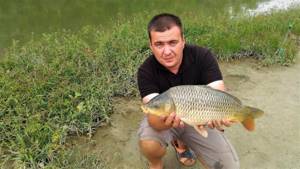
The Sal River is also famous for some fish. Fishing, despite the muddy water here, will allow you to catch some good catfish. In poor visibility, it swallows anything. That is, the color of the water will even benefit you. Pike, asp, ruffe and the ubiquitous perch are found everywhere. They even caught chub near Bolshaya Martynovka. Tourists will find many catchable reserves on the Sal River. Fishing is especially good in the Semikarakorsky district (usually one passes through Volgodonsk), on sections of the Volgodonsk-Zimovniki highway, in various recreation areas of the Zimovnikovsky district, near the Rubashkin farm and near a tiny village called Strakhov. There are also restrictions on the Sal River. Fishing is prohibited in the water protection zone near artificial ponds (lowest reaches). There is a strategic zone, and also spawning pits. Thanks to the connection with the Don, 2 Red Book fish are found - the thorn and the Ukrainian lamprey.
Having said what pleasure the Sal River brings to fishermen, we will stop describing fishing. Let's move on to the hunt. At your service are Dzhuraksalskoye, Dontsovskoye, Kamyshovskoye, Ilyichevskoye, Stoyanovskoye, Verkholomovskoye, Bolshovskoye, Kuteynikovskoye, Rubashkinskoye and Volgodonskoye lands. As well as the reserves of the Konstantinovsky, Martynovsky and Semikarakorsky hunting clubs. In their areas it is allowed to shoot wild boar, wolf, fox, brown hare, gopher, and raccoon dog. And also quail, partridge, duck and wild goose. The rest of the animals are prohibited, since the Rostov region cannot be called rich in flora and fauna.
Protection of the Sal River
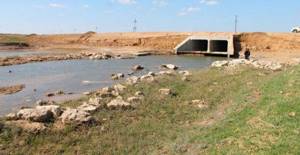
Small rivers in the steppe and semi-desert belt of the 61st region are the main sources of water supply for settlements and agriculture. In this regard, the protection of the Sal River requires special attention from the authorities of the Tselinny district of Kalmykia and several districts of the Rostov region. There is no large industrial production on the banks, and crowds of tourists who are ready to pollute the shore do not flock here (we were lucky in this reservoir). All protection of the Sal River is based on maintaining the permeability of the water. On the filling of the riverbed in conditions of insufficient precipitation. Alas, the owners of some private farms, or even just households, are hindering the process. They make mini-dams and dams. And currently the protection of the Sal River is carried out by representatives of the law. Raids identify unauthorized structures and destroy them. Those who made them are wanted. In summer, the upper reaches of “our” hydrological object dry out in some areas. And in the zone of coastal salt marshes, Dzhurak-Sal is also overgrown. Since 2003, the authorities of the 61st region and Kalmyk autonomy have regularly used funds received from the federal budget under the program for the conservation of small rivers. In the last of the listed areas, a water reservoir was opened on the Kara-Sal tributary.
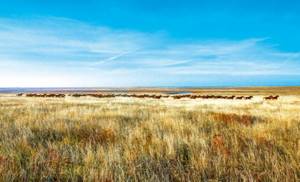
This description of the Sal River aims to show all the alternatives for local recreation. A visitor should remember that the “brand” of these places is the floating reed islands.
What kind of fish bites on lard?
The attachment is a universal one and will contribute to good catches not only of bream, but also of roach, rudd, ide, silver bream, sabrefish, and carp. In artificial ponds and lakes with clean, cold water, trout often bite on bait. Sometimes carp and small catfish like this bait. The latter, however, react better to a spoiled product.
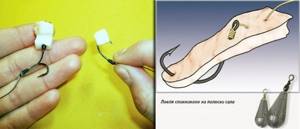
Experienced fishermen claim that fishing for crucian carp in August-September with lard is more effective. He willingly feasts on such food, ignoring other baits. In the warm season, the fish prefers vegetable baits, worms and maggots, but as soon as it gets colder, it is caught quite well with lard. The number of trophies may increase if hunters feed them in the places chosen for fishing. The main thing is not to overdo it, since well-fed fish will not bite.
To learn more:
Jigs for winter fishing: purpose and types
